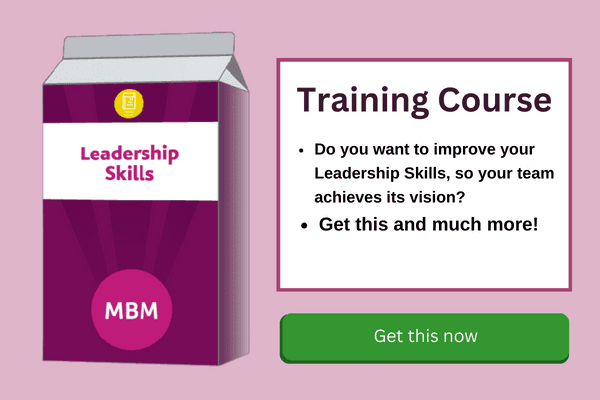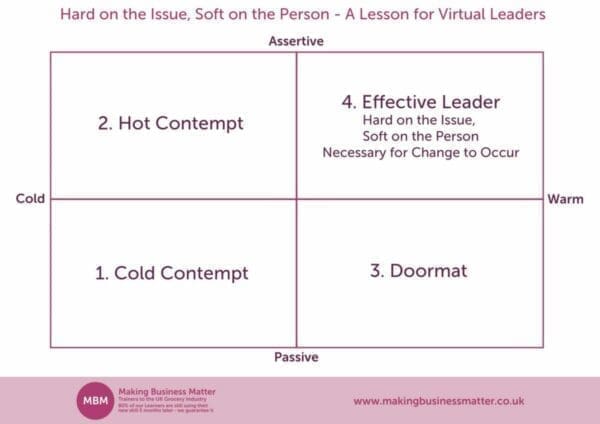Hard on the Issue, Soft on the Person: Discover Your Boundaries for Leaders
I had just finished another argument with my son. He was 10-years old (Now 17) and I am a father stressed with work, struggling to do all that a person needs to in this life, and justifying to myself why I had just ‘taken his head off’. He’s lazy, he’s foolish, he’s…erm…my son.
In a work context, I am more ‘professional’ – whatever that means. Maybe less allowing my emotions to take-over and yet still having those moments thinking about the people on my team – ‘Why the hell has he done that?’. ‘How the sh1t did that happen? Is she foolish’? Born out of frustration, a need to get a lot done, and more wondering why people ‘just don’t get it’.
Sound familiar?
If it does, then you’re in the right place. In the right place to see it from another angle. Maybe even change your behaviour a little. Let’s see…
Dr Henry Cloud wrote in his book, Boundaries for Leaders a quote:
‘Hard on the issue, soft on the person’.
Most people have heard of it. Yet, I for one, struggle with it. What does it mean? Going soft? Being a ‘wuss’? I’d be trampled on, but the idea intrigued me enough to find out more.

Researching the Other Angle
Imagine that you need to hold someone accountable. Most leader’s approach to holding someone accountable is to revert to the fight or flight principle.
Normally, as a leader, you know that having to hold people accountable is part of the job description, yet the way most leaders manage this, is ‘monkey see, monkey do’. This means they saw their leaders fight, so they ‘fight’. Adopting a tough and cold tone, and taking the person to task. Just like I did with Jack (son). As leaders, we do have this option. However, as Dr Henry Cloud alludes we also have other options. He suggests the best leaders set boundaries for themselves and their team to improve performance and increase satisfaction.
A Boston Matrix of Options
Let’s see those options as 4 choices using a Boston matrix:

The x-axis is your temperature; Cold to warm, or hostile to compassionate. The y-axis is your assertiveness; passive to assertive.
1. Bottom-Left Box: Cold and Passive – Cold Contempt
This box is chosen by a new leader or a leader that lacks the confidence to lead people. They hold people accountable with ‘Cold contempt’. An example is if you were to make the person wait for a meeting to start, ‘forget’ to copy them in on emails they need, and/or discuss their poor performance with your line manager. This is the flight mode.
Sticky Learning ® is 7 times more effective than 1-day training courses. Plus, you will get a Chain of Evidence proving your Return on Investment. Discover soft skills training that changes behaviours long term.

2. Top-Left Box: Cold and Assertive – Hot Contempt
Most leaders hold people accountable from this box. Cold and assertive. This is the fight mode. An example of adopting this style is to ‘have it out’ with someone. You would be detached from the person, very fact-driven, and direct. Whilst this may sound ‘professional’, the challenge with this quadrant is that most people will not change as a result of using this option. More about change later in this article.
3. Bottom-Right Quadrant: Warm and Passive – Doormat
This leader wants to be everyone’s friend. We all do. Just that, as leaders, well – you can’t be. A good leader inspires, shares a vision, and also has to hold people accountable. A passive person does not. They want to be strong, yet lack self-confidence with this skill. Therefore, they try to get their team to do what they need by being kind and also by just doing it themselves. An example of this leader is someone who will work a lot of hours to bridge the gap between the demands of senior management and what their team is achieving.
4. Top-Right Quadrant: Warm and Assertive – The Effective Leader
A leader choosing this quadrant understands that people are the key to success. Without them, your ability to reach higher, as a leader, is limited. Most people that work for a leader want to feel that the leader has their best interests at heart and will tell them when they have done well and when they have not.
An example of an effective leader that holds people accountable is someone that uses language like:
I know you want to do a good job. I have seen it many times. On the occasion of last week, with the client, you did not. The presentation was not engaging and that meant that the client might not choose us. Let me understand why please’.
What’s Wrong With Choosing the Hot Contempt Option?
To a point, this option works. The person is clear on your concerns. Of that, there is no doubt. You were very clear. However, the problem with this approach is told well by the story of the sun and the wind. The fable is told of a competition between the North Wind and the Sun to decide which is the stronger of the two. The challenge was to make a passing traveller remove his coat. However hard the North Wind blew, the traveller only wrapped his cloak tighter to keep warm, but when the sun shone, the traveller was overcome with heat and soon took his cloak off.
This is true of cold contempt. The colder you are with someone, the more they defend, go ‘inside themselves’, and hold onto their coat. The objective of holding someone accountable is that they change their behaviour. They learn. They do the thing better next time. A little like Play-Doh, the warmer it is the more it can be changed.
William Ury, the Negotiating King, suggests in his Forbes article that the first challenge in negotiation is to ‘disentangle the people from the problem. And to focus on interest and not positions’. This is a very similar approach to using quadrant 4. The opposite is to treat someone with contempt when you hold them accountable or hold your position in your negotiation, and you’ll not be surprised that they match you.
5 Tips to Help You to Use the Effective Leader Option when Holding People Accountable

#1 – Be the Leader You Want to Be
When you started your career, you didn’t set out to do what other leaders had done to you. But you were never trained. Never shown another way. Never modelled how leaders set boundaries. Have a vision of a great leader – Branson, Dyson, or somebody you have seen lead people well – think of that person as you hold others accountable.
#2 – ‘Do Unto Others…’
Treat others as you would want to be treated. Would you rather be balled out or someone to ask a question first? We both know the answer.
#3 – Repeat to Yourself
Solve the issue. Solve the issue. I am here to solve the issue.
#4 – Frozen
‘Let it go’. In the past things happened that you might hold a grudge for. Release the past, release the relationship, release the person.
#5 – Be Present
In his book, How to Win Friends and Influence People, Dale Carnegie says that often we are thinking about something else when we with someone. And Ekart Tole describes in the Power of Now, that we are always thinking about the past or the future. Now about the here and now. Be present for that person. Make them your world for the time you are together.
#6 – Remember Why?
Why are you going hard on the issue and soft on the person? Because you want them to change. And they will only change if you are ‘warm’.
#7 – ‘I’ll Show Him’
How many times has someone made a point with you in an awful manner and you have wanted to find a way to get back at them? Lots, I imagine. We all have. You probably got even with them. And there a few times when someone was well, jolly decent, even warm when they could have been angry and you could not do enough to help them. You did it and more. This is a choice. A choice for leaders.
Boundaries for Leaders

Henry’s book made for some great take-aways, as a leader:
- Leaders lead people, and it is the people who get it all done.
- Leaders can motivate or demotivate their people.
- They meet, they argue, they worry and they put all of their energy into trying to come up with the ‘right’ plan. But the truth is that there are five right plans.
- When leaders lead in ways that people’s brains can follow, good results follow as well.
- As the CEO began to reflect and responded to Henry’s question, he described a company culture that was positive, highly energetic, accountable, innovative, and performance-oriented. He came alive when he talked about it. And at the right time, there came another question from Henry, ‘So why don’t you build that kind of culture?’.
- Boundaries are made up of two essential things: what you create and what you allow…Leaders define the boundaries, and successful leaders define them well in several key areas.
- The second way is to be hard on the issues, but soft on the person. As a leader, you may be thinking you are in an adult-to-adult conversation, but simply because of your role, you might be seen by the other person as a parent figure…Be aware of the fact that as a leader, your position carries much more psychological and emotional weight than you know.
You can also read Henry’s summary and action plan from his book.
Action: For even more useful content on leadership, check out our ultimate guide on Leadership Skills.




